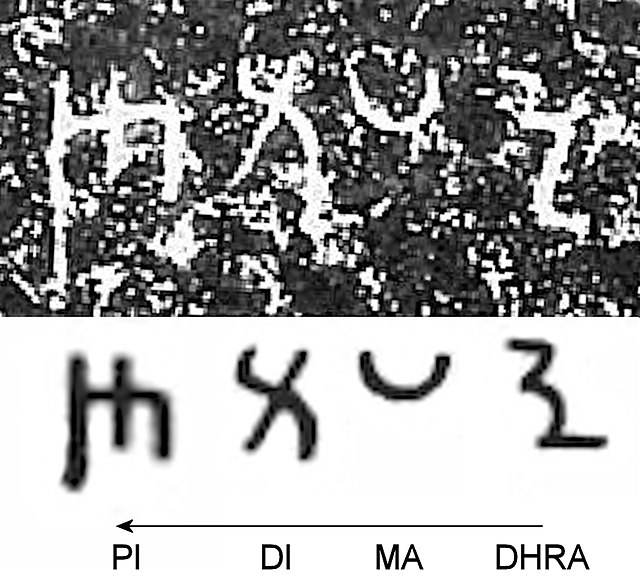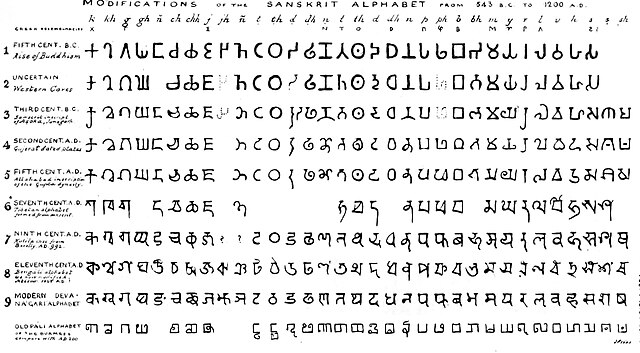Ashokan Prakrit is the Middle Indo-Aryan dialect continuum used in the Edicts of Ashoka, attributed to Emperor Ashoka of the Mauryan Empire who reigned 268 BCE to 232 BCE. The Edicts are inscriptions on monumental pillars and rocks throughout the Indian subcontinent that cover Ashoka's conversion to Buddhism and espouse Buddhist principles.
Ashokan Prakrit inscribed in the Brahmi script at Sarnath.
Dhrama-dipi "rescript on morality" in Ashokan Prakrit in the Kharoshthi script at Shahbazgarhi.
The Edicts of Ashoka are a collection of more than thirty inscriptions on the Pillars of Ashoka, as well as boulders and cave walls, attributed to Emperor Ashoka of the Maurya Empire who reigned the Indian subcontinent from 268 BCE to 232 BCE. Ashoka used the expression Dhaṃma Lipi to describe his own Edicts. These inscriptions were dispersed throughout the areas of modern-day Bangladesh, India, Nepal, Afghanistan and Pakistan, and provide the first tangible evidence of Buddhism. The edicts describe in detail Ashoka's view on dhamma, an earnest attempt to solve some of the problems that a complex society faced. According to the edicts, the extent of Buddhist proselytism during this period reached as far as the Mediterranean, and many Buddhist monuments were created.
A Major Pillar Edict of Ashoka, in Lauriya Araraj, Bihar, India
Brahmi script consonants, and their evolution down to modern Devanagari, according to James Prinsep, as published in the Journal of the Asiatic Society of Bengal, in March 1838. All the letters are correctly deciphered, except for two missing on the right: 𑀰(ś) and 𑀱(ṣ).
The first known inscription by Ashoka, the Kandahar Bilingual Rock Inscription, in Greek and in Aramaic, written in the 10th year of his reign (260 BCE).
Minor Rock Edict from Maski.






